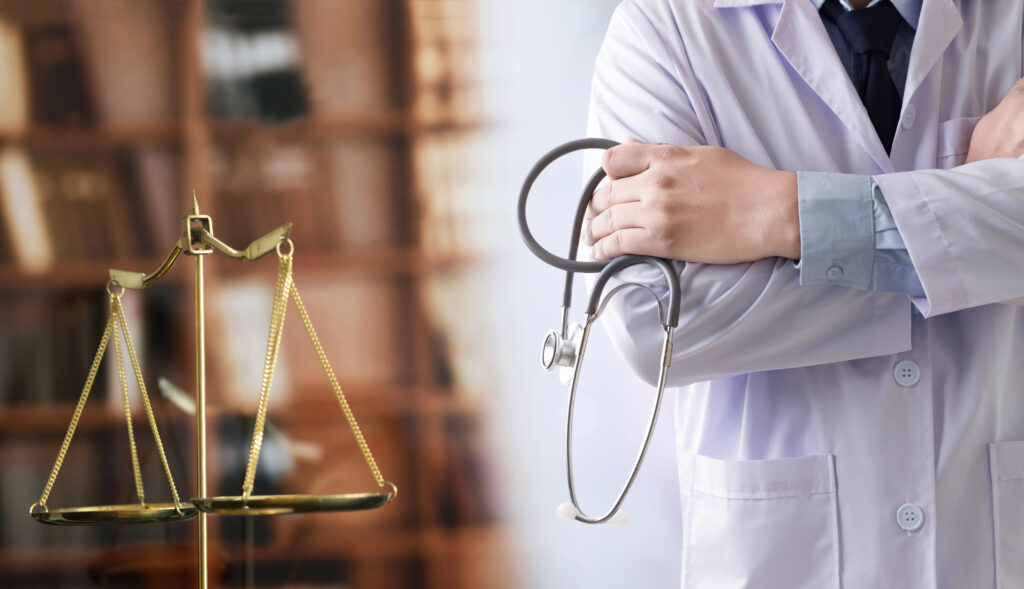Long Island Digital Health Record Errors and Malpractice Lawyer
A single entry in your digital chart may have changed your life. A missed allergy. A mistyped dose. A copied note from the wrong patient. In hospitals and clinics across Long Island, electronic health records (EHRs) were meant to improve patient care, but too often, they lead to medical mistakes that have devastating consequences.
When Digital Records Cause Real Harm
Today, nearly every medical professional relies on digital health records to track patient history, medications, test results, and treatment plans. But healthcare providers are still human — and when they enter the wrong data or rely on outdated information, the results can include delayed diagnosis, surgical errors, or even death.
Medical malpractice refers to more than just botched surgeries or poor bedside manner. When healthcare professionals fail to update or review medical records properly, that failure can lead to serious injuries, life long injuries, or catastrophic outcomes — especially when doctors rely on incorrect information to guide medical treatment.
These types of medical errors are part of a growing trend in medical malpractice cases. And in Long Island, patients harmed by digital record mistakes may have the legal right to seek justice and pursue compensation.

Real Examples from Long Island Hospitals
A patient in Nassau County was prescribed medication she was allergic to — because her allergy was never entered into the hospital’s digital system. She went into anaphylactic shock and spent weeks in the ICU. In another case, a man’s history of heart problems was overwritten by another patient’s data. He was discharged without tests — and suffered a stroke hours later.
These aren’t rare events. Poor training, copy-and-paste charting, and rushed hospital staff all contribute. Hospital negligence tied to EHR systems is becoming one of the third leading causes of preventable injury in U.S. hospitals.
Medical negligence doesn’t always look like a dramatic error. It can be a missed lab result in your chart. A failure to list surgical instruments used in a procedure. A nursing home relying on old vitals because the current ones never synced. These are the silent failures behind many medical malpractice lawsuits today.
What You Need to Know About Medical Malpractice Claims
Filing a medical malpractice claim in New York is complex — but you don’t have to do it alone. If you’ve been harmed because a hospital or healthcare provider failed to manage your health records properly, you may be entitled to legal recourse under New York personal injury law.
To win a claim, your legal team must prove four things:
- The medical professionals had a legal duty to provide proper care
- They breached that duty through medical negligence
- That breach caused physical pain or serious injury
- You suffered damages, like lost income or long-term health complications
Medical malpractice claims often involve hospital protocols, emergency room errors, or failures by healthcare providers to act on critical information in time. With support from medical experts and access to complete health records, your attorney can help you pursue fair compensation.
Why These Cases Require Experienced Help
Digital health records are complicated. Multiple hospital departments may access them. One error can be repeated by doctors, nurses, or specialists — multiplying harm. Establishing liability often means reviewing charts, comparing timestamps, and obtaining expert opinions about what should have been done differently.
Many victims struggle with delayed care, incorrect diagnoses, and medical procedures they never needed. And sadly, some cases involve birth injury or cerebral palsy linked to a missed warning sign buried in the records.
Legal proceedings can feel overwhelming when you’re still recovering — but time limits apply. In most medical malpractice lawsuits in New York, you have two and a half years to act. Waiting too long could mean giving up your legal rights entirely.

Speak With Greenstein & Pittari, LLP Today
If a digital health record error caused you or a loved one serious harm, the law gives you options. At Greenstein & Pittari, LLP, our Long Island medical malpractice lawyers have helped patients across Suffolk and Nassau counties hold healthcare professionals accountable for medical negligence. You don’t have to face this alone. Start with a free consultation and let our experienced team help you understand your legal options.
Learn more about our Long Island digital health record errors and malpractice lawyer services
Frequently Asked Questions
How do errors in electronic health records lead to malpractice lawsuits?
If healthcare providers rely on inaccurate or outdated health records that lead to patient harm, that may qualify as malpractice. These mistakes often involve missed diagnoses, wrong medications, or serious surgical errors.
Can I sue a hospital if they entered the wrong medical history in my chart?
Yes. If that error caused you harm — such as receiving the wrong treatment or being denied necessary care — you may have a valid medical malpractice claim.
What damages can I pursue in these cases?
You may seek compensation for medical expenses, lost wages, long-term care, and emotional suffering. Every case is different, and a medical malpractice attorney can help calculate your losses.
Do I need medical experts to prove my claim?
Yes. Medical malpractice cases rely heavily on expert opinions to show how healthcare professionals failed to meet the standard of care — and how that failure caused your injury.
What should I bring to my free consultation?
Bring any relevant medical records, discharge papers, and notes about your care. If possible, include the names of hospitals or doctors involved. The more information you provide, the stronger your case can start.
Are there time limits for filing a medical malpractice lawsuit in New York?
Yes. You typically have two and a half years from the date of the malpractice — or from when the error was discovered. Waiting too long may limit your ability to seek compensation.
